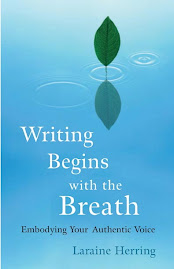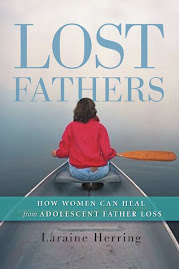


I have finished revising The Boy in the Walls, my first young adult novel. This writing process has been different for a number of reasons.
1) I actually had a story from the beginning. For those of you who know me, I'm usually pretty story-challenged. I am extraordinary at characterization -- not so much with the actual story. When I begin a book, I know nothing about it. I perhaps have a voice, or a bit of a music piece, or some other sound, but not much else. I follow the sound and see where it goes. I had a sound this time too -- the line "I can't feel!" spoken by the boy in the walls. But I knew who he was, why he was there, and what his role in the story was.
2) I actually had a fully-arrived protagonist, fourteen-year old Dee Hamilton. In any other kind of writing situation I would have questioned this fiercely. I would tell my students to question it. But I remember Annie Dillard in The Writing Life talk about sometimes getting something in one fell swoop and knowing enough to just fall on your knees before the writing goddess and say thank you, recognizing you'll likely never get that again. I think I've been on my knees throughout this whole process. Thank you, Writing Goddess.
3) I actually had a story arc, not just a story. I had a yearning. A driving question. Tension. Multiple characters and a historical component (the polio epidemic in the United States in the 1940s and 1950s). I'm still shaking my head at this one. Maybe I'm learning more than I think I'm learning after writing for 25 years. Maybe I'm learning more from teaching than I think I'm learning after 15 years. Regardless, thank you, Writing Goddess.
I have always believed that authentic writing emerges when the author is in harmony with his or her surroundings -- meaning, the author is open to what is available to him or her at that time. The writer, fully awake, is dedicated to knowing and not knowing. I've got that right at the top of my blog pages all the time.
As I've posted here, I took a trip back to North Carolina this summer. The general arc of the trip was planned, but I picked up a lot of unexpected things. I learned my aunt jumped up and down outside the hospital room my dad was in when he had polio. She was trying to see inside the window because she wasn't allowed in. Visiting with my aunt showed me how lonely she was as a result of Dad's illness. His disease took precedence, and she was left in the cold. I learned that although I don't recall too many pleasant experiences with my own grandmother, and Dad certainly never gave me any, my aunt talked about how afraid my grandmother was that Dad would die from the polio, and how she devoted everything to him, to the point of smothering. What my Dad perceived as controlling, my aunt perceived as loving too much. Fabulous insight.
I visited my childhood home in Charlotte at a time I had not originally planned to see it, and because of that, I was allowed inside to touch things. I touched the doorknob of my father's closet and I felt the energy charge. I left the house with a book. An entire book. And I was ill and lethargic and heavy with it for six weeks until it emerged.
I learned a lot more about polio than I knew before, and I felt for the first time how lonely Dad must have felt trapped in an iron lung, and how angry he must have felt with the paralysis. In the novel, Dee's father kills himself. I already knew this when my friend Jeffrey killed himself, rather than face the certain death of multiple myeloma. Grieving for Jeffrey and feeling the unique emotions around a suicide helped me understand Dee, my protagonist, more. I already knew that the father in the novel killed himself because he had post-polio syndrome. Virtually all of the first round survivors of polio contracted post-polio syndrome if they lived long enough. My dad had it, and was, perhaps, fortunate enough to have a heart attack before he ended up flat on his back, unable to move again. In the novel, the father chooses suicide. When Jeffrey died, one of my thoughts as a writer was, wow, J, look at what you gave me to work with. Since Jeffrey was a writer, he would have understood.
Perhaps the biggest shift in this process for me has been beginning to address mother-daughter relationships instead of father-daughter ones. Although the inciting incident in the book is Dee's father's suicide, and the gist of the book is the aftermath of that, the heart of the book is the different ways in which Dee and her mother grieve, and it's about their estrangement and attempts to come back together again. Well, Writing Goddess, it's about time. It should be no big surprise, my mother and I grieve very differently. I have felt abandoned by that difference, even though I intellectually understand it. Through the novel, I have an opportunity to try and recreate it and change the ending a little. I sent the book to her today. She'll read it. Bless her heart; she reads everything I write.
I have always thought I became a writer because of Dad's illness and death. Those things gave me my grist for a lifetime. But I learned how to be a writer because of my mother. Every day, she showed up. Every day, she made sure we had food and clothes and our homework done. Every day, even though we grieve differently, she stayed. These are the things it takes to be a writer. Showing up every day, especially on the days we least want to. Taking everything as it comes and remaining steadfast. My father gave me content and my mother gave me her unique brand of secular Lutheranism. Get up. Get it done. Rest. Get up. Get it done. Rest. This is the path of a novelist. What a lucky writer I am -- each parent's half made a whole.
The manuscript went out this afternoon to several editors who'd requested the full manuscript after seeing the summary and first fifty pages. Wish me luck. The young adult market is the only fiction market expanding.
Here's the summary, (for your temptation!) which is usually the hardest thing to write when you write a novel. Funny, it's easier when you actually have a story. :-)
Laraine Herring
The Boy in the Walls
Summary
YA novel – approximately 40,000 words
Fourteen-year-old Dee Hamilton is hearing voices. Not voices, exactly, but a single voice in the wall of her bedroom. It's the summer before her freshman year of high school, seven years from the day she came home to find her father, who had long suffered with polio, had killed himself. Now, her mother, at her wits end, wants to move them 2000 miles across the country, from North Carolina to Arizona, to Start Over. Dee is afraid to leave the house because if she leaves, her father won’t know where to find her.
The house she lives in has been in her dad's family for three generations. Her father spent much of his childhood trapped by polio in his bedroom, which has become Dee's bedroom. When her grandparents died, they passed the house to him. The house is more important to Dee than anything in the world, and now it's talking to her louder than ever before. Even after Dee moves to Arizona, she hears the house calling her.
Instead of starting high school in Tucson, Dee boards a Greyhound and heads back east to Wilmington to rescue the boy in the walls. Once she is back in her old house, her aunt, the crazy "bat lady", Marydolores, who lives alone in the big house next door, begins coming over to chat. First she brings food. Then she brings pictures and bits of information about her father's polio and his life before he met her mom. Dee begins to see a part of her father she never knew before, and begins to understand a little bit of the isolation he must have felt as a young boy with polio, living in an iron lung and then stuck inside his house for five years.
Marydolores and the boy in the wall pull Dee deep into her father's past, and as a result of exploring his past, she begins to examine her own. As Dee understands some of her father's anger, she's able to access her own anger at her father's decision to kill himself. When she allows herself to get angry, she finally begins to feel again. Once Dee is able to let her feelings move, the boy in the wall, who is her own projection of her father's pain, is able to go to sleep, allowing Dee to begin the next phase of her life.
The Boy in the Walls is a book about complicated mourning, attachment, home, and the journey we all must take to find an identity separate from family.











3 comments:
After my email to you, checked this site, the story about writing the novel...wonderful, yes La Diosa de Las Palabras...The Goddess of The Words...can't wait to read it, amiga. Almaluz xoxo
**Years ago when living on my farm in Sebastopol, Califas, my 88 year old neighbor asked me to meet her best friend who was visiting- went to her place across the road, a large truck parked in her driveway. As I walked inside, her friend was inside what must have been an 'iron lung'- a metal container that held her, where she could breathe...and when she smiled at me, her skin transparent with light, it felt like a blessing. Then all my kids went to meet her as well- she didn't speak but wrote her words, and smiled that blessing to us. Gracias for making me remember...xoxo
I like your site! And your book sounds great!
Beth Fehlbaum, author
Courage in Patience, a story of hope for those who have endured abuse
Ch. 1 & book trailer are online!
http://courageinpatience.blogspot.com
I came across your blog while doing research for my own YA novel. The synopsis sounds intriguing and powerful! I loved the story behind the story, and the voice you used to present it in. There are a lot of writer's blogs out there. I intend to follow yours--your words are certainly worth my time, and very inspiring.
Thank you,
Spike
Post a Comment